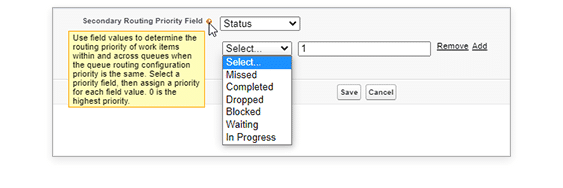The goal of Skills-based routing is to get the best available agent answering the incoming question. The concepts are the same when making a local implementation, but the complexity may rise when implementing skills-based routing over multiple channels, countries and languages.
We already described the basic setup in the article: Configuring Skills-based routing in Salesforce. In this article we will take a deeper dive in configuring the work distribution of new non-voice interactions (Work Items) that enter your contact center.
Work Distribution
Your support agents all have specific skills and different proficiencies in these skills. A native English speaker may have a higher proficiency than someone that learned English as second or third language. The same goes for products or services that you provide. Agents may be more knowledgeable about one compared to the other.
But then, when agents with the highest proficiency are not available, you don’t want to simply drop the incoming interaction. You are probably ok to distribute the incoming work item to someone who is less proficient, but who is surely capable of answering the question.
Work distribution is not just getting the work equally distributed over your team members, but it is also about selecting the best suited agent at that very specific moment.
There are different items that may get configured when using Salesforce skills-based routing to help you optimize the distribution of incoming interactions.
Service Channels
When implementing Omni-Channel for different channels, then this is a first place where you may influence the priority of incoming questions.
Note: Enable Secondary Routing Priority option in Omni-Channel Settings to make use of this functionality.

The picklist ‘Secondary Routing Priority Field’ . This allows you to define the priority of a secondary field value, when the initial field for work distribution – via the Routing Configuration – is equal for different work items.
The example to the right is for the Chat Service Channel. This value may get set for different Service Channels that you use in your implementation. So you may perfectly set a different secondary routing priority field (and values/priorities) for the Case Service Channel if you implement it as well.
Capacity Models
By default, the agent’s capacity model is based on the tabs that he has open. But, there is the option in Omni-Channel Settings to enable Status-Based Capacity calculation as well.
The difference between both models is as follows:
- Tab-based capacity: With the tab-based capacity model releases an agent’s capacity when a work tab is closed in the service console
- Status-based capacity: With the status-based capacity model, work remains assigned and applied to an agent’s capacity until the work is completed or reassigned to a different agent
Routing Configuration
Take into account that, when using Skills-based routing for Cases, a Routing Profile may get linked with multiple Queues in Salesforce. But you also may have different Routing Configurations for different Queues. For instance, if you have different Queues for different countries, then define a distinct Routing Configuration, so that teams in the respective country may work according to their own schedules. But if you prefer to have the same work distribution over your full Salesforce org, then you may chose to simply use one Routing Configuration for all Queues that you implement.
The Routing Settings in Routing Configuration are important to understand. These define how routing is handled, and how much work is involved when a work item gets distributed to your support agent.
Routing Priority
The order in which work items from the queue that are associated with this routing configuration are routed to agents. Objects in queues with a lower number are routed to agents first.
Also read
- Why skills-based routing?
A brief explanation of the need for skills-based routing in your organization- Skills-based routing in Salesforce
The basics about skills based routing in Salesforce- Configuring Skills-based routing in Salesforce
Steps to make an initial configuration of skills-based routing in Salesforce- Default Required Skills in Dynamic Skills-based Routing
Ensure that certain skills get never dropped as to ensure support agents always require a minimum skill to answer the incoming interaction
So, you could have incoming questions in a Queue that has lower priority, over questions from – for instance – Gold customers – for which the Case is set in a separate Queue.
Routing Model
Not taking External Routing into account, there are two models:
- Least Active: In this model, incoming work items are routed to the agent with the least amount of open work.
- Most Available: In this model, incoming work items are routed to the agent with the greatest difference between work item capacity and open work items
Work Item Capacity
In the Routing Configuration you also define the work that is involved when a work item of this type gets pushed to an agent. There are again two options:
- Units: This indicates the amount of an agent’s overall capacity that’s consumed when the agent is assigned a work item from queues that are associated with this configuration.
- Percentage: This is the percentage of an agent’s overall capacity that’s consumed when the agent is assigned a work item from queues that are associated with this configuration.
Presence Configuration
In the Routing Configuration, you defined the work that is involved for a specific Work Item that gets pushed. In the Presence Configuration, you defined the capacity of your agents. So, when you have Presence Status that allows for handling Cases and Chats, then the you should define how a combination of work items across these channels may get handled at the same time by an agent.
Let’s take the following example:
- Agent Capacity: 100
- Work Item load
- Case: 50 units
- Chat: 33 units
This means that one agent may handle following combinations:
- 2 emails, but no additional chat sessions – totals to 100 = Full capacity
- 3 chat sessions, but no additional emails – totals to 99 = 1 unit left, which is insufficient for more work
- 1 email and 1 chat at the same time – totals to 83 = 17 units left, which is insufficient for more work
- if the agent is working already on 2 chats, no additional email may get pushed – totals to 66 units, which is insufficient to push another email, which requires 50 units available
As already indicated at the beginning of this article, this complexity won’t be needed in smaller implementations. But when implementing different channels, over different countries and languages – where teams are also in different countries – some planning and discussion will be needed to get all settings correct.
Interested in setting up Skills-based routing in your organization? We may assist your team to make this happen. Fill in our contact form to further discuss!








3 Comments
Comments are closed.